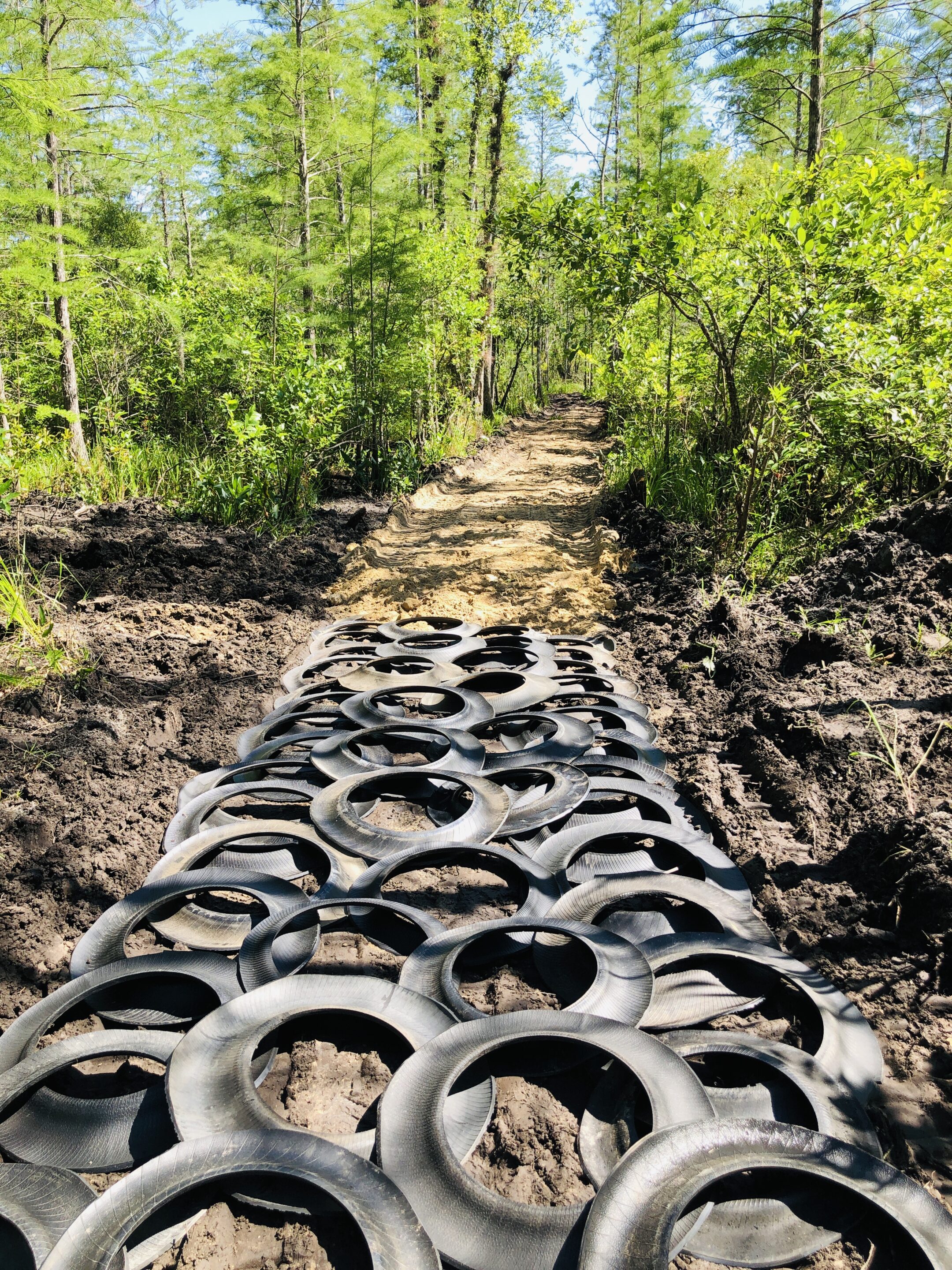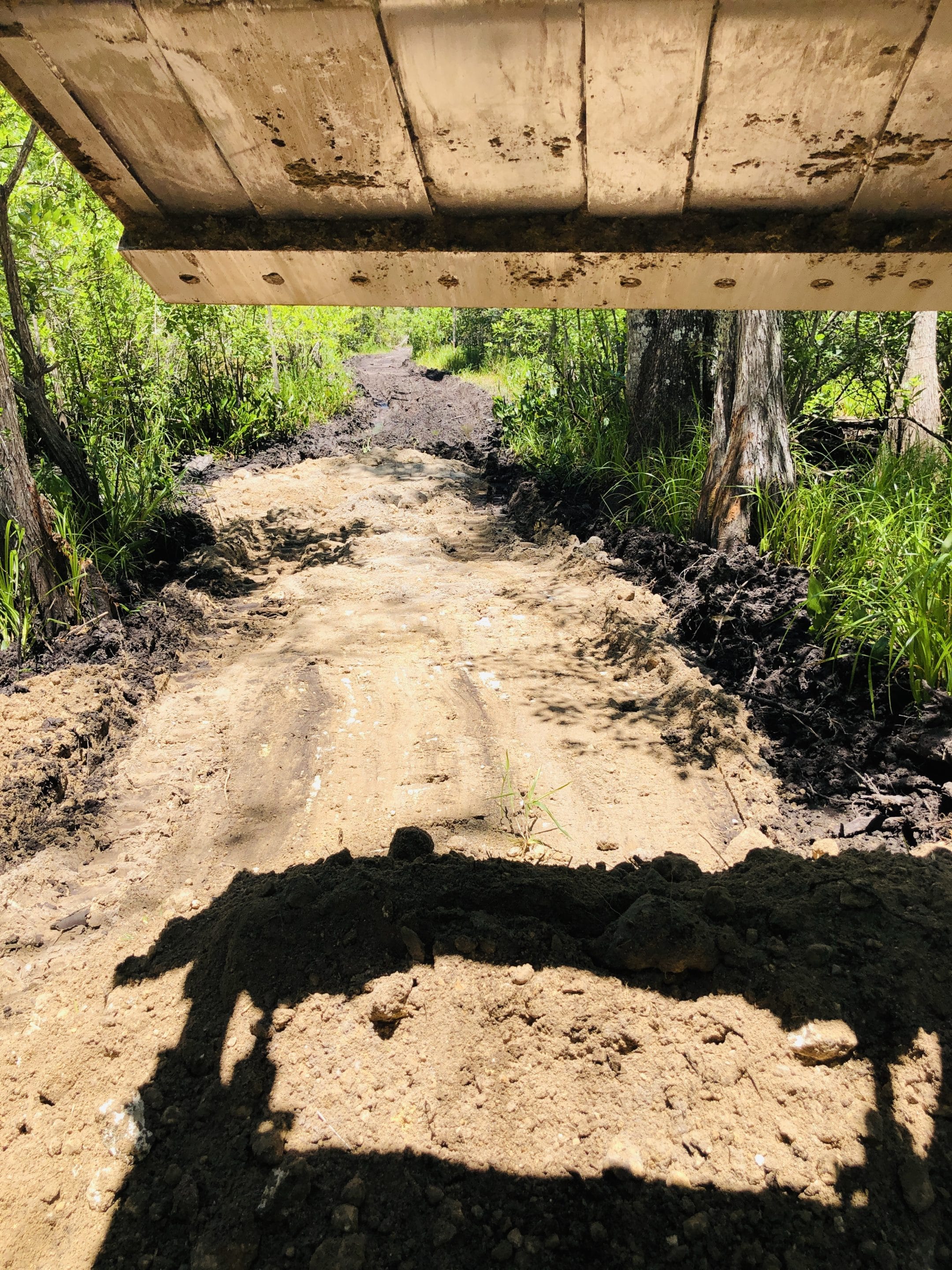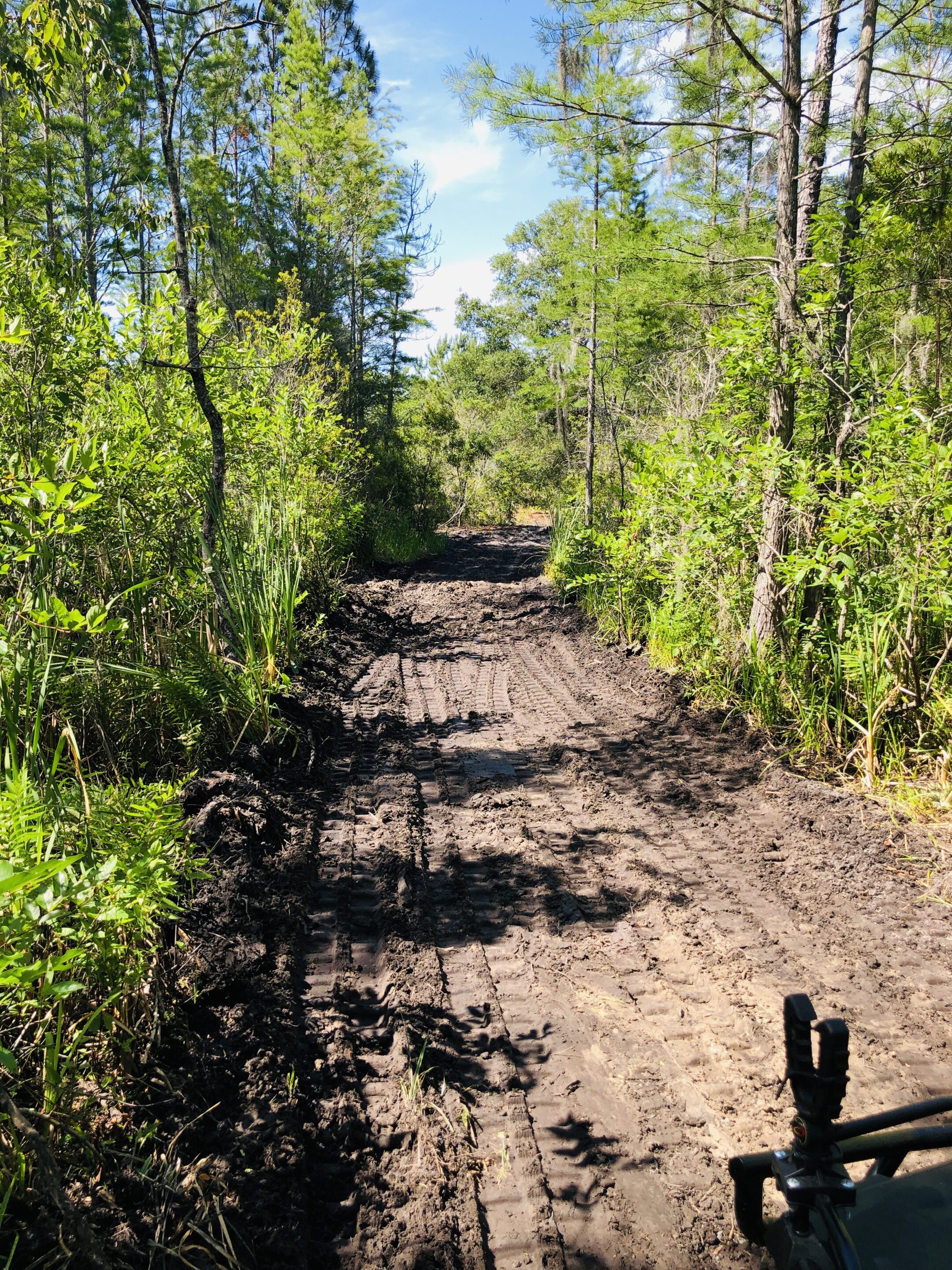Road Building 101
If you are looking to add a road to your property in the Chiefland, Williston or Cedar Key area, it is important to understand the steps and what to expect based on your conditions and construction techniques.
Road Building Considerations
Most rural and owners are looking for an access road. The primary thought is just being to get onto their land and maybe build a structure. A landowner that is thinking long-term will also consider:
- What is attractive to a future buyer?
- What is needed for construction?
- Is saving money now, going to cost more later?
- What is the biggest vehicle that will ever need access?
- How much use will it get?
- What are the water considerations?

You will notice budget is not on the list. Building a road based on budget and not based on what is needed, will only result in more money being spent later. In some situations, you may not want to build a road at all or maybe more it to a new location due to soil and water conditions.
Good Foundation
Any road that will last has to start on a solid foundation. In Florida, this may mean removing feet of swamp muck to get down to sand or limestone. Building a road on organic matter will result in the road quickly getting soft spots that become ruts and eventually turn into mud pits.
A road should be 20-30% wider than the vehicles using it. This enables the material to push against the side material. All roads not covered by asphalt or concrete want to push out under the weight of vehicles. The extra material on the side resists the lateral movement keeping the road above the water line.
The top 12″ of the road should be above the water line. If water is level, or just below, the surface of the road, the water seeps into the road until the water is level. When a vehicle drives over this, the water moves and so does the road material resulting in ruts. When a road is over a ditch or naturally flowing water source, add a culvert. You do not want to fight the natural flow of water or inhibit drainage in the area. What is dry today, could be a flowing creek during the wet season. It is also just the right thing to do environmentally.

Road Material
There are many road materials available. Your road building contractor should suggest several materials starting with large coarse rock and building up to a limestone or asphalt millings top layer in Florida. The base rock resists sinking into the ground and each layer of smaller rock on top, packs into the rock below locking all the layers together. The top layer of limestone is then compacted to form a hard surface good for regular use.
When selecting a contractor ask them a few questions about materials and equipment to be used. If they don’t mention some of these things, you should keep looking.
Keep in mind it is not possible to know the exact amount of road material needed. You should expect a range for the number of truck loads needed and know the cost per additional load above the original quoted number. The number varies due to depth and width considerations only discoverable upon digging.
Road Building Cost Factors
There are several factors that go into rural road building but the biggest variables are:
- Distance to the job. How far to workers and materials have to be transported.
- The type of equipment, quantity and hours needed to do the job
- The amount of material to be removed, brought in and moved
- Number of man-hours needed




